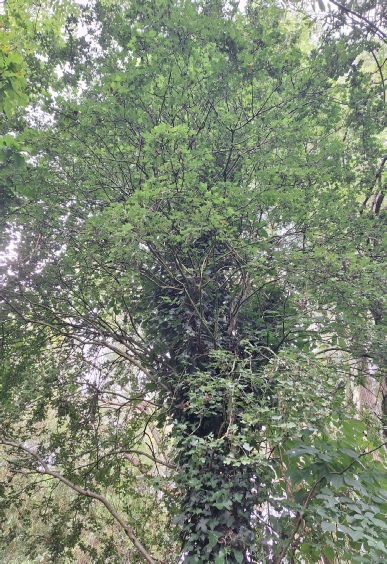
Edgeley Wildlife & Nature Reserve
www.edgeleywildlifereserve.com
Edgeley Wildlife & Nature Reserve Today
Woodland
Trees identified in EWR:
Ash, Bird Cherry, Elder, Hawthorn, Holly, Oak, Scots Pine, Silver Birch, Sweet Crab, Sycamore, Wild Cherry, Willow, Yew.

Hawthorn
The fruit is enjoyed by wildlife and humans alike and can be used to make jellies, chutneys and wine. The leaves of this hedgerow staple are often the first to appear in spring, with an explosion of pretty pale-pink/white blossom. It simply teems with all types of wildlife from bugs to birds.
Common hawthorn can support hundreds of species and is the foodplant for various wildlife such as caterpillars of moths, including the hawthorn, orchard ermine, pear leaf blister, rhomboid tortrix, light emerald, lackey, vapourer, fruitlet-mining tortrix, small eggar and lappet moths.
Its flowers are eaten by mammals such as dormice and provide nectar and pollen for a variety of bees and other pollinating insects. The haws are rich in antioxidants and are eaten by various migrating birds as well as small mammals.
The dense, thorny foliage makes fantastic nesting shelter for many species of bird and the gnarled wood is used to make handles and walking sticks.
Common hawthorn can support hundreds of species and is the foodplant for various wildlife such as caterpillars of moths, including the hawthorn, orchard ermine, pear leaf blister, rhomboid tortrix, light emerald, lackey, vapourer, fruitlet-
Its flowers are eaten by mammals such as dormice and provide nectar and pollen for a variety of bees and other pollinating insects. The haws are rich in antioxidants and are eaten by various migrating birds as well as small mammals.
The dense, thorny foliage makes fantastic nesting shelter for many species of bird and the gnarled wood is used to make handles and walking sticks.
The Cornovii believe that Boudicca was buried wearing a crown of thorns made of hawthorn beside a mere somewhere in Cheshire after dying en-route to North Wales seeking solice and healing with the druids. Along with a grand old willow, a spectacular specimen of Hawthorn, unusually tall and narrow is one of the centre pieces of EWR
The Spectacular Specimen of Hawthorn in EWR - Unusually tall and narrow.


Trees & Flora